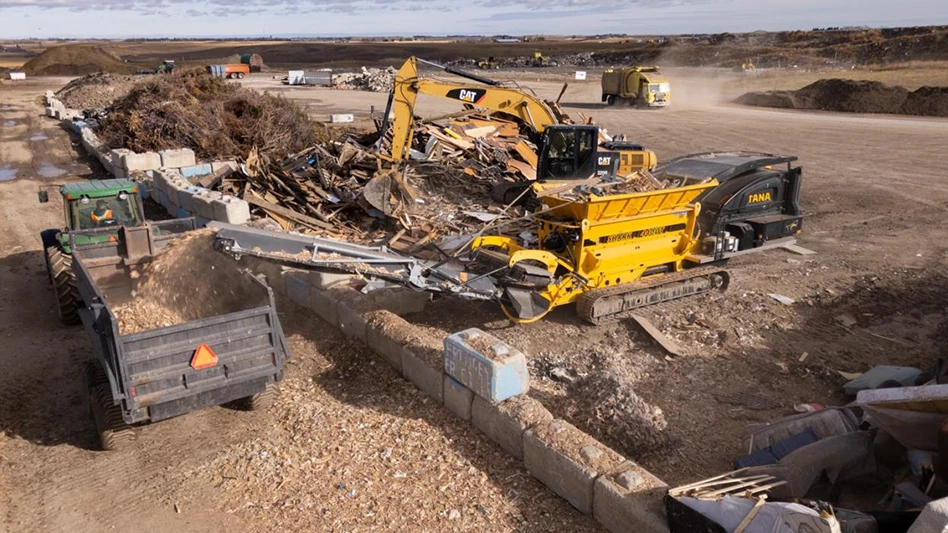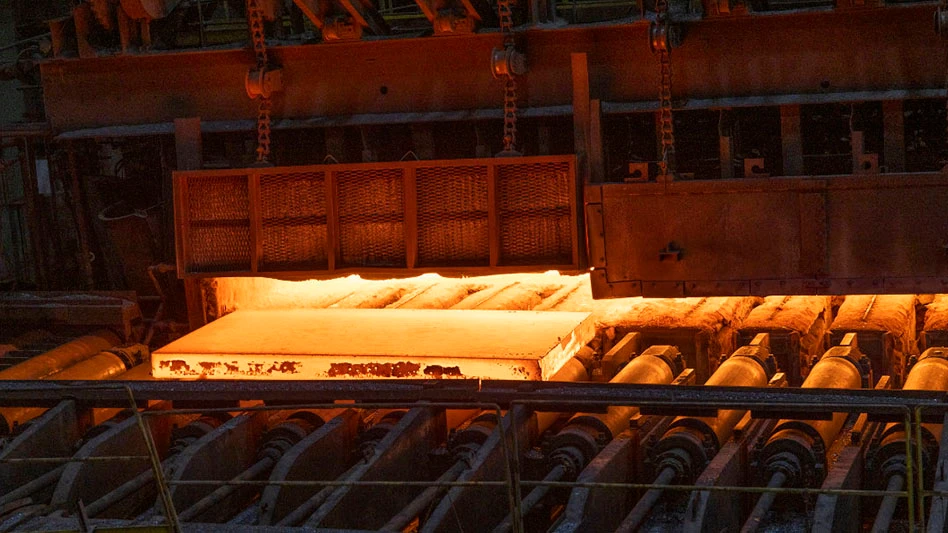The World Steel Association (Worldsteel), Brussels, has released its October 2010 short range outlook (SRO) for 2010 and 2011. The association forecasts apparent steel use will increase by 13.1 percent to 1.27 million metric tons in 2010 after contracting by 6.6 percent in 2009. This represents an improvement of 35 million metric tons over the organization’s April SRO for 2010, exceeding the pre-crisis peak of 1.22 million metric tons in 2007. Worldsteel forecasts world steel demand to grow by 5.3 percent in 2011, resulting in a record 1.34 million metric tons of demand.
In a release analyzing the statistics, Daniel Novegil, chairman of Worldsteel’s Economics Committee, says, “Our first SRO forecast after the economic crisis in April 2009 suggested 8.4 percent growth in steel demand for 2010. We have now revised this figure up to 13.1 percent.” Novegil says the improved outlook is in light of a better than expected forecast for developed economies, particularly the European Union, North America and the former Soviet republics, and the continued economic rebound in many emerging economies. “This suggests a steady and stable steel recovery, and our current forecast does not foresee a double dip economic recession as feared by some,” Novegil adds.
Worldsteel remains cautious, despite the improved forecast, he says. “Steel demand in the developed economies in 2011 will still be well below the pre-crisis peak level.” While Novegil says the economic recovery has been driven by the inventory cycle and government stimulus packages, the effects of which are beginning to fade, he questions whether consumer and corporate spending will pick up to continue the recovery. “Recent economic indicators are sending mixed signals, and developments during the remaining part of this year and early next year must be watched carefully,” he says.
China’s apparent steel use this year is expected to increase by 6.7 percent to 579 million metric tons after a strong 24.8 percent increase last year, according to Worldsteel. While China showed an increase of 9.2 percent in apparent steel use during the January-August 2010 period, Worldsteel is forecasting China’s apparent steel use growth to slow considerably in the remaining part of this year because of the Chinese government’s effort to cool down the country’s real estate sector and its ongoing steel production control.
For 2011, China’s growth rate will further slow to 3.5 percent because of a weak real estate sector and the phasing out of stimulus packages, according to the organization.
While the forecast for China is for a fairly low growth rate compared with other countries, according to Worldsteel, the country’s apparent steel use in 2011 will be 42 percent greater than its 2007 level. China will account for about 45 percent of world apparent steel use in 2011, the organization forecasts.
Worldsteel reports that India’s steel demand grew 7.5 percent during the economic crisis and is expected to grow by 8.2 percent and 13.6 percent in 2010 and 2011, respectively. With 68 million metric tons of apparent steel use in 2011, India will become the third largest steel consumer after China and the United States. India’s steel use will be 32 percent greater than its 2007 level, according to Worldsteel.
In the NAFTA region, the United States saw a 36.2 percent decline in apparent steel use in 2009. Aided by stock building activities and a recovery in manufacturing, U.S. steel use is expected to grow by 32.9 percent in 2010 and by 9.4 percent in 2011, reaching to 86.1 million metric tons. This growth in 2011 will bring it back to 79.7 percent of the 2007 level. For NAFTA, apparent steel use will grow by 31.3 percent and by 8.7 percent in 2010 and 2011 respectively, Worldsteel forecasts.
In Central and South America, apparent steel use recorded a 23.6 percent decline in 2009, but the region’s steel demand is returning in light of recovering commodity prices, exports and renewed capital inflows, Worldsteel reports. The region’s apparent steel use will grow by 28.2 percent in 2010, aided by a strong rebound of 34.6 percent in Brazil. In 2011, the region’s apparent steel use will grow by 9.1 percent to reach 47.6 million metric tons, a historical high for the region and 14 percent greater than the 2007 level, according to the organization.
The EU economies had a 35.7 percent reduction in their apparent steel use in 2009, with Spain, Italy and the U.K. hard hit in light of the collapse of their construction sectors. The recovery in the EU is turning out to be stronger than expected as the region’s manufacturing exports, especially Germany’s, gets a boost from the global recovery. Worldsteel notes that in 2010, the EU will see an 18.9 percent increase in its apparent steel use in light of inventory rebuilding and strength in the export sector. In 2011, increase in real use is expected to drive the region’s steel demand to grow by 5.7 percent to reach 147.4 million metric tons, bringing it back to 75 percent of the 2007 peak, Worldsteel reports.
Japan, which experienced a fall of 32.3 percent in apparent steel use in 2009, will see steel use increase by 19.1 percent in 2010, higher than earlier expected, in light of the fiscal stimuli and strong export growth, Worldsteel says. However, in 2011, Worldsteel says it expects Japan’s steel demand to retreat by 1.4 percent in light of tight fiscal policy, a strong Yen and weakening of its major steel using sectors. This brings Japan’s apparent steel use in 2011 to 62. million metric tons, 76 percent of 2007 level.
The recovery in the CIS (Commonwealth of Independent States) region is surprisingly robust, Worldsteel says. Apparent steel use in the region fell 28.3 percent in 2009, lead by a fall of 43 percent in Ukraine. In 2010, apparent steel use in the CIS region is expected to grow by 26.5 percent and by 11.1 percent in 2011. This brings the region’s apparent steel use in 2011 to 89 percent of the 2007 peak, the group forecasts.
Turkey, which experienced a 16 percent decline in apparent steel use in 2009, will see a strong recovery of 20.5 percent in 2010, followed by a further 10.7 percent growth in 2011 to reach 24.1 million metric tons, which will bring its apparent steel use back to the 2007 peak level, according to Worldsteel.
The MENA (Middle East and North Africa) region was stable in 2009 despite the fall in oil prices and collapse in the construction market, which was offset by an expansionary fiscal stance in Egypt and Iran. The region recorded a 0.4 percent growth in 2009 and is expected to show a 5.9 percent and a 5.3 percent growth in apparent steel use in 2010 and 2011 respectively, according to Worldsteel’s forecast. This will bring apparent steel use in the MENA region to 65.7 million metric tons, which is 17 percent above the 2007 level.
Latest from Recycling Today
- Plastics market turbulence could continue in new year
- EGA Spectro Alloys donates to 30 nonprofits, charitable initiatives
- Signature Systems earns ISO certification
- Poll claims companies worried about future packaging materials shortages
- US EAF mills are running strong: Navigate Commodities
- Survey claims majority of Americans support DRS
- The ESG time trap: How companies fall behind before they ever begin
- Commentary | Recycling: An equation of supply and demand





